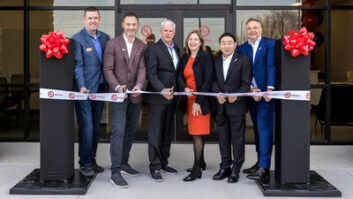
Showrooming has plagued brick-and-mortar retailers for many years, with e-commerce quickly chipping away at in-store sales.
Recently however, experts report the rising trend is actually the reverse – shoppers are now exploring options online before buying in-store. According to a 2014 report from BI Intelligence, reverse showrooming, or “webrooming,” is actually more common among U.S. consumers, with 69 percent of consumers researching online before transacting in-store.
Though webrooming indicates in-store purchasing behavior may be on the rise, retailers are not yet out of the woods. The act of showrooming and the rise of e-commerce is still a very present threat to brick-and-mortar retailers. The following strategies can help retailers make the in-store experience relevant again and, in turn, increase retail sales and drive customer loyalty.
Engaging in-store experiences: E-commerce experts agree that a streamlined and intuitive user experience is incredibly important in online retailing, and the same can be said for in-store experiences. Storefronts are no longer just a utility. Savvy brick-and-mortar retailers are turning them into attractive destinations for trying out products, interacting with knowledgeable salespeople and even congregating with friends. Apple paved the way with its sleek stores and friendly, casual staff. Capital One introduced its 360 Cafes to develop a community among its customer base. And more retailers are following suit.
Leveraging features and services that lend themselves to an in-store experience is another way to drive foot traffic. Programs such as electronics trade-in and in-store tech support benefit from a personalized, one-on-one interaction. They also deliver a better payoff through instant gratification – the customer is immediately rewarded during their store visit. This combination of features and benefits is not easily replicable through the online channel, making it a key selling point to drive in-store shoppers and sales.
Compelling in-store incentives: Promotions are used as a traffic driver for e-tailers, but in some cases they can work even more effectively in retail environments. In-store promotions appeal to today’s shopper, as they can be more flexible and simpler than online promotions, and most importantly, can deliver on instant gratification expectations. Eliminating the need for proof-of-purchase and the subsequent delayed payment or reward is yet another benefit over online, and another reason for shoppers to conduct their business in-store.
In-store promotions also open the door for store associates to effectively upsell products and services. During their time in store, customers have the opportunity to ask more questions and explore other purchases. For example, in the case of electronics trade-in, accessory coupons can be issued after completing a trade. This encourages the customer to immediately spend their trade-in proceeds on high-margin accessories.
Adopting an omni-channel approach: Brick-and-mortar retailers should also embrace their online presence, ensuring all marketing and product offerings are fully integrated for an omni-channel approach. According to a survey by comScore, 40 percent of purchases are made crossing channels, whether searching in-store and purchasing online or vice versa. So an omni-channel approach to customer service and the shopping experience engenders the most customer satisfaction, which triggers loyalty and brand recognition.
Further solidifying the need for omni-channel selling, the comScore survey found that the five most important things to shoppers making purchases both in store and online are:
* Price consistency across shopping channels
* The ability to ship out-of-stock items directly to their home
* The option to track the status of an order
* Consistent product assortment across channels
* The ability to return online purchases to the store
Retailers can effectively drive in-store behavior by offering a differentiated in-store experience, adopting proven e-commerce methods and leveraging an omni-channel marketing approach. Playing to the strengths of the retail environment (assisted sales, instant gratification) while relying on the power of online communication can effectively reverse the showrooming trend, helping to drive retail sales and increase customer loyalty.
Jeff Trachsel is chief marketing offficer of NextWorth Solutions, which has provided turnkey in-store and online CE trade-in platforms for major retailers nationwide since 2006. NextWorth says its combination of expertise, team and platform is fundamentally changing the way consumers buy, own and disown electronics.













